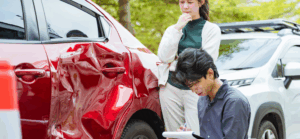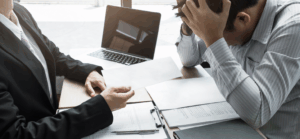Pedestrian accidents often occur due to various factors, including distracted driving, speeding, failure to yield, impaired driving, and poor visibility. After an accident, victims must take immediate steps to ensure their health, safety, and legal rights. These include seeking medical attention, reporting the incident, documenting the scene, and consulting with an attorney. Pedestrian accident victims may be entitled to compensation for damages including medical expenses, lost wages, pain and suffering, property damage, and loss of enjoyment of life. Liability in such cases is determined by analyzing several factors, including the right of way, traffic signals, and potential negligence by the driver or the pedestrian. Insurance claims may involve several policies, including the driver’s auto insurance, the pedestrian’s health insurance, and uninsured/underinsured motorist coverage.
Legal Standards/Rules
1. Causes of Pedestrian Accidents
Pedestrian accidents can be caused by distracted driving, speeding, failure to yield, impaired driving, and poor visibility conditions. In California, the law presumes that both pedestrians and drivers must exercise due care for safety under Vehicle Code Section 21950 (California Vehicle Code). California courts have long held that drivers have a duty to exercise caution when approaching crosswalks and pedestrian areas. Factors such as negligence or failure to yield may lead to liability for the driver.
- Lichtman v. Siemens Industry Inc., 16 Cal. App. 5th 914 (2017) – A case where the court found that drivers have a heightened duty of care to pedestrians in crosswalks, particularly when the driver is aware or should have been aware of the pedestrian’s presence.
2. Steps to Take After an Accident
If involved in a pedestrian accident, the following steps are advised under California law:
- Seek Immediate Medical Attention: Even if injuries are not immediately apparent, prompt medical treatment is essential.
- Report the Incident to Authorities: An official police report will serve as an important document for any future insurance claims or lawsuits.
- Document the Scene: Gathering evidence, such as photographs and witness contact information, can strengthen the case.
- Avoid Discussing Fault: The victim should avoid admitting fault or discussing fault with any involved party.
- Consult with an Experienced Attorney: An attorney specializing in pedestrian accidents can navigate the complex process of pursuing legal remedies and ensure that the victim’s rights are protected.
3. Compensation for Victims
Pedestrian accident victims may be entitled to several forms of compensation, including:
- Medical Expenses: This includes all current and future medical expenses.
- Lost Wages: Compensation for wages lost during the recovery period and any future loss of earnings.
- Pain and Suffering: Compensation for both physical pain and emotional distress caused by the accident.
- Property Damage: Compensation for any personal property, such as a mobile phone, that was damaged in the accident.
- Loss of Enjoyment of Life: In cases where the injury restricts the victim’s ability to enjoy hobbies or daily activities.
- Loth v. Truck-A-Way Corp., 60 Cal. App. 4th 757 (1997) – The court in this case affirmed that a pedestrian victim is entitled to compensation for pain and suffering in addition to medical expenses and lost wages.
- Hilliard v. A. H. Robins Co., 148 Cal. App. 3d 374 (1983) – The court recognized emotional distress damages for individuals suffering from psychological harm resulting from an accident, in addition to physical injury.
4. Proving Liability
Liability in pedestrian accidents can be complex. The following factors are considered:
- Right of Way: Pedestrians generally have the right of way at marked crosswalks (California Vehicle Code § 21950).
- Traffic Signals: Pedestrians must follow traffic signals. Failure to do so may contribute to liability, particularly if the pedestrian was jaywalking.
- Driver Negligence: If the driver was distracted, speeding, or driving under the influence, they may be held liable for the accident.
- Contributory Negligence: In cases of comparative negligence, a pedestrian’s own actions (such as jaywalking) may reduce the amount of compensation they are entitled to receive.
- State Farm Mut. Auto. Ins. Co. v. Yang, 35 Cal. App. 4th 563 (1995) – This case discusses the application of comparative negligence in California, where damages are apportioned based on the degree of fault.
5. Insurance Claims
Claims in pedestrian accidents may involve several insurance policies:
- Driver’s Auto Insurance: The at-fault driver’s insurance policy should cover medical expenses and property damage.
- Pedestrian’s Health Insurance: The pedestrian’s health insurance may cover medical expenses, especially if there is a delay in receiving compensation from the driver’s insurer.
- Uninsured/Underinsured Motorist Coverage: If the at-fault driver does not have enough insurance, the pedestrian’s own insurance policy may cover the shortfall.
- State Farm Mut. Auto. Ins. Co. v. Yang, 35 Cal. App. 4th 563 (1995) – California law requires that auto insurance policies include provisions for uninsured/underinsured motorist coverage, protecting pedestrians when drivers do not have sufficient insurance.
6. Safety Tips
Pedestrians can reduce the risk of accidents by:
- Using Crosswalks and Following Signals: Always cross at designated crosswalks and obey traffic signals.
- Staying Alert: Avoid distractions like texting or wearing headphones while crossing the street.
- Wearing Visible Clothing: Especially at night, bright or reflective clothing increases visibility to drivers.
- Walking on Sidewalks: Whenever possible, pedestrians should use sidewalks and designated paths. If none are available, walking against traffic increases safety.
7. Legal Assistance:
An experienced attorney can:
- Investigate the Accident: Gather witness statements, security footage, and other evidence to support the case.
- Handle Insurance Communications: Protect the victim from accepting low settlements and ensure that the claim is handled properly.
- Evaluate Damages: Help the victim understand the full scope of damages they are entitled to, both economic and non-economic.
- Negotiate a Fair Settlement: If necessary, represent the victim in court to ensure they receive adequate compensation.
8. Importance of Accountability
Holding negligent drivers accountable is vital for providing justice to victims and promoting road safety. By enforcing the rules of the road, such accountability ensures safer driving behavior, benefiting all road users, especially pedestrians.
Pedestrian accidents can be devastating, and victims often face serious physical, emotional, and financial challenges. Understanding the common causes of these accidents, the steps to take after an incident, and the legal framework surrounding compensation and liability can significantly improve a victim’s chances of receiving justice. Consulting with a skilled attorney ensures that the victim’s rights are protected and that they receive fair compensation for their injuries. Furthermore, holding negligent drivers accountable helps reinforce the importance of road safety for both drivers and pedestrians.







